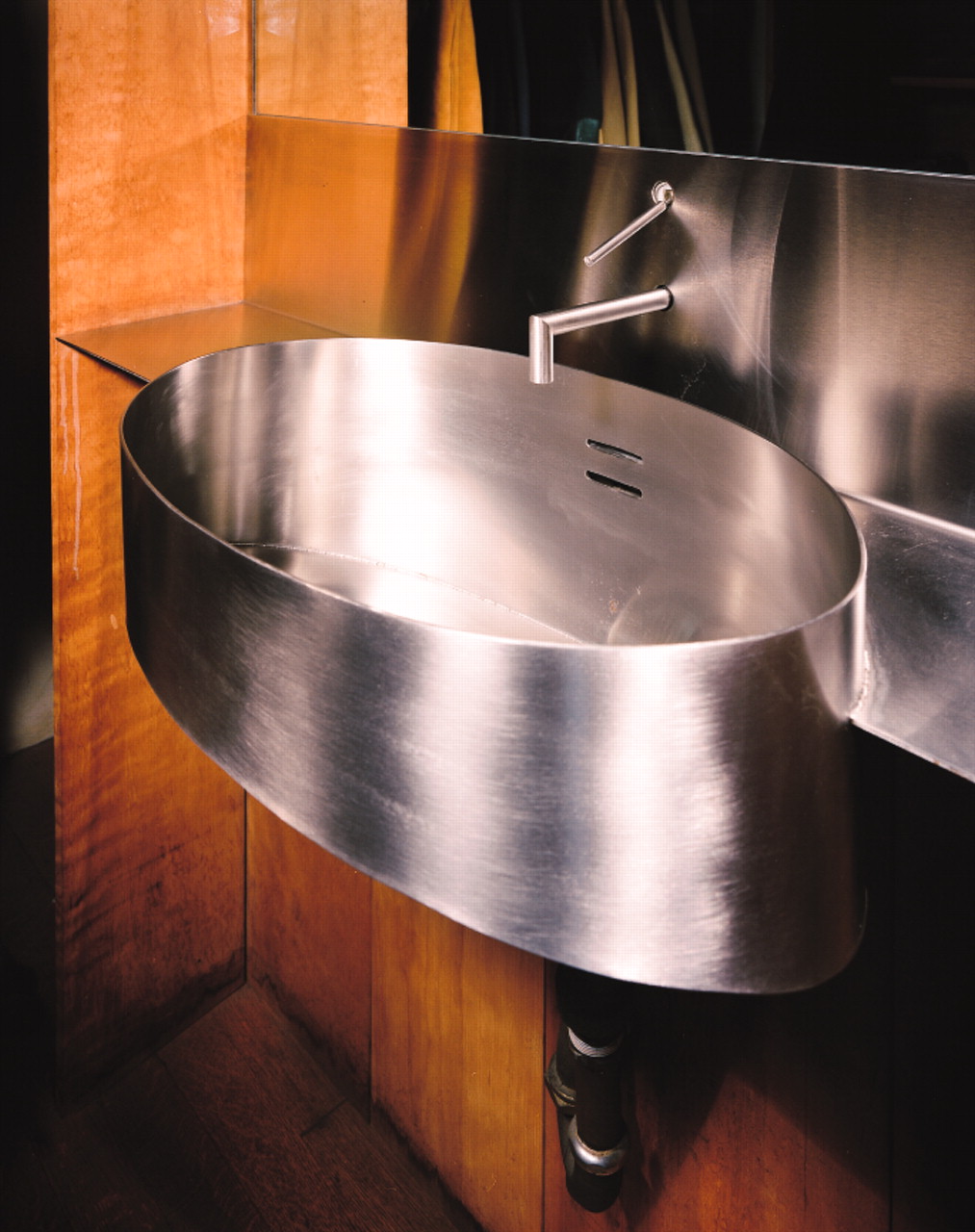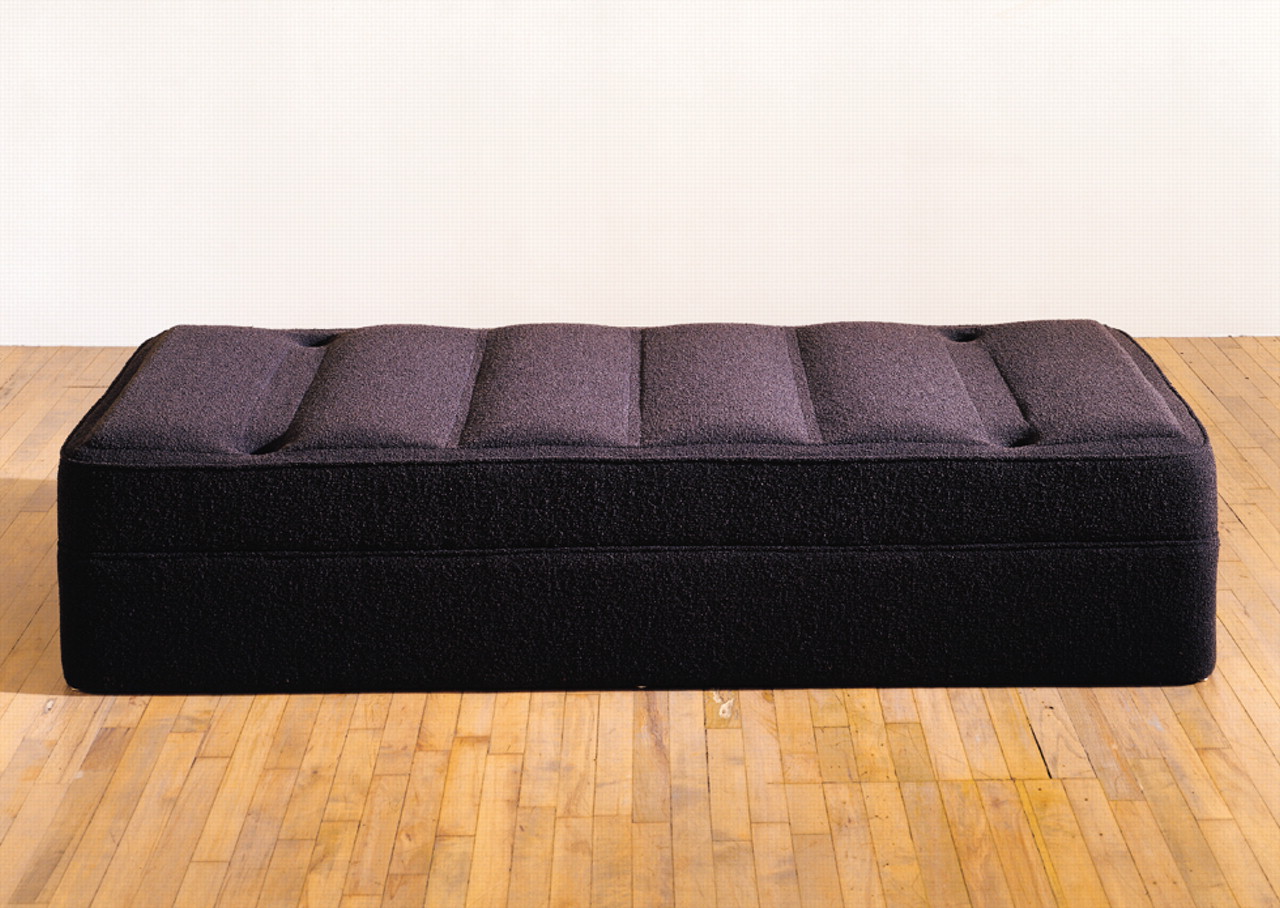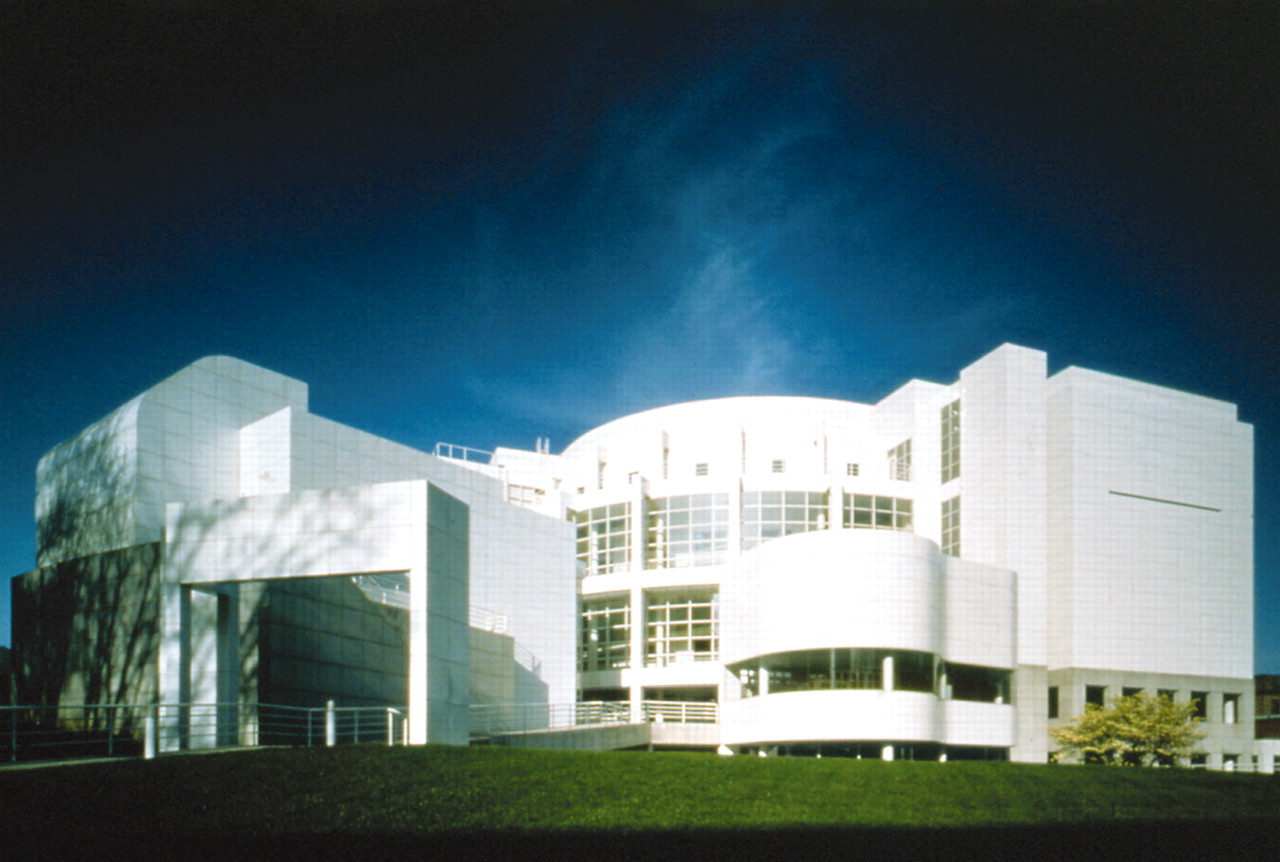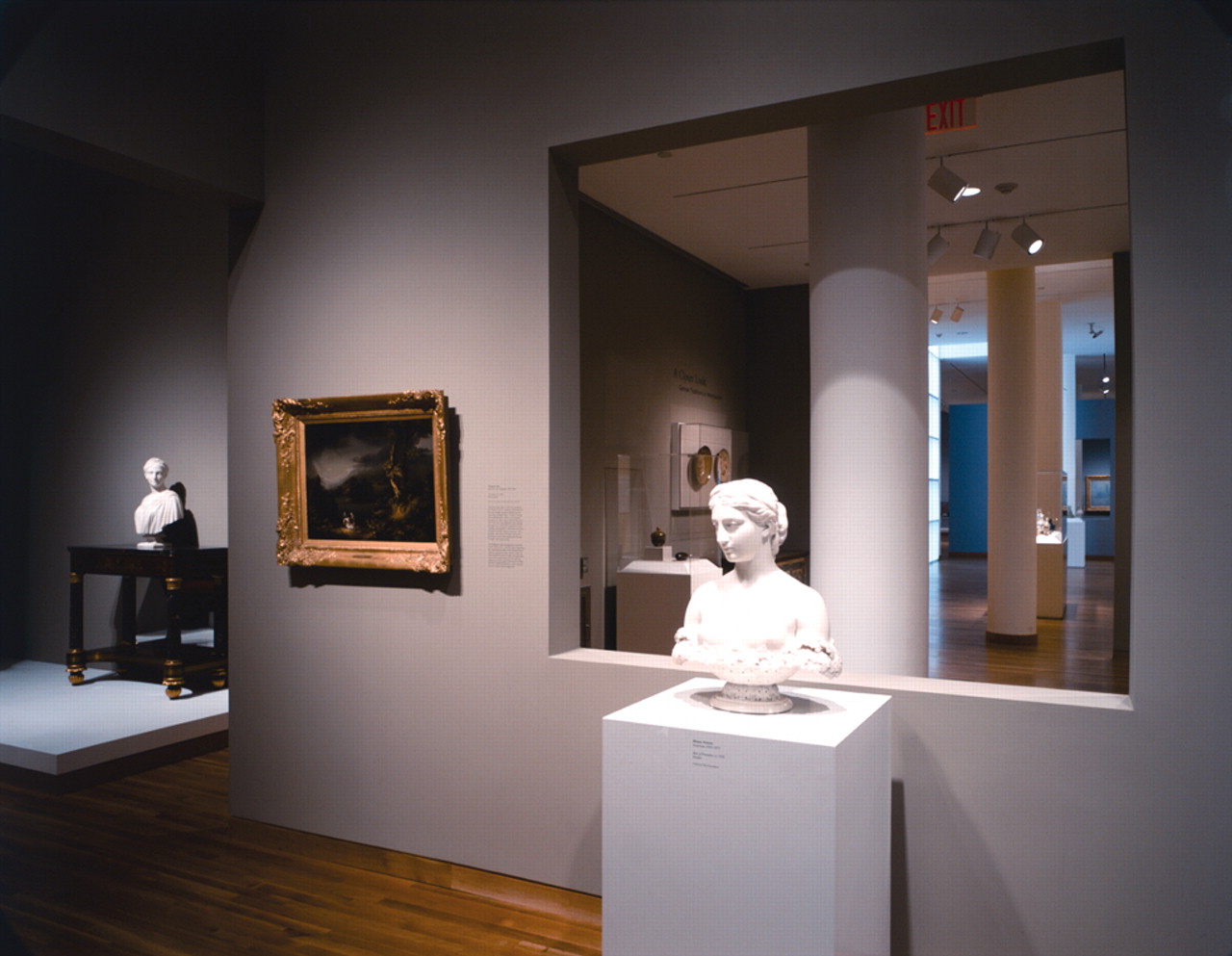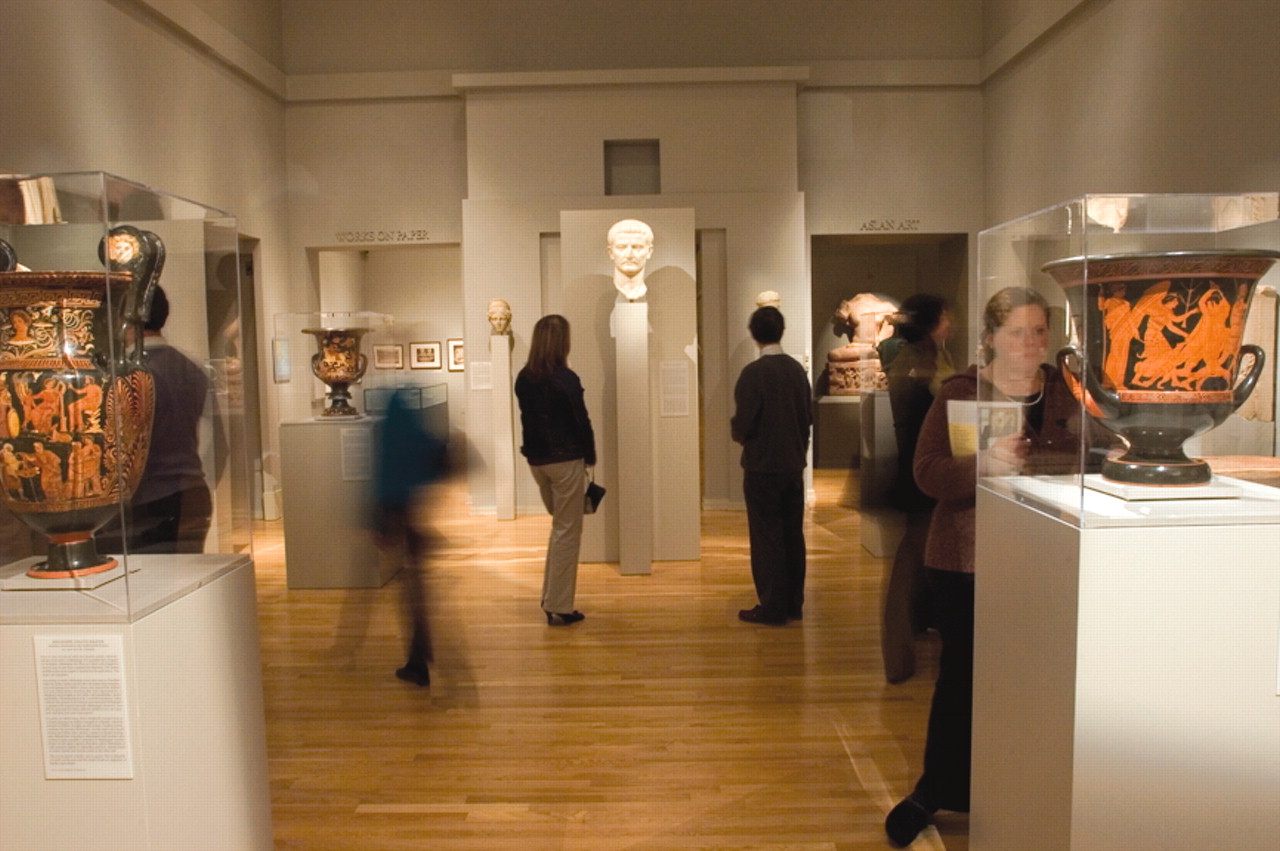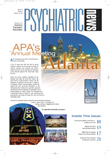The visual arts in Atlanta are diverse conceptually and scattered geographically around the city. New galleries in old buildings demand as much attention as ancient art in great, modern museums.
Perhaps the best-known stop on any art tour of Atlanta is the High Museum, a part of the Woodruff Arts Center in the Midtown section of the city.
The High Museum of Art not only contains more than 10,000 works of art but is a work of art itself. The main building, opened in 1983, was designed by Richard Meier. It was named one of the “10 best works of American architecture of the 1980s” by the American Institute of Architects. Italian architect Renzo Piano designed the three new buildings now under construction, which will more than double the museum's space. The $85 million expansion project is scheduled to be completed this year, although not before the APA annual meeting in May. Only the permanent collection will be on display then, said a museum spokesperson.
The High holds collections of American, African, and European art, 19th- and 20th-century decorative arts, photography, sculpture, and contemporary art. It is also the only major general art museum in North American housing a curatorial department devoted to folk art and self-taught art.
A number of galleries are also located near the High Museum. The Atlanta Contemporary Art Center began as an artists' cooperative and has evolved into a combination of gallery and studio space. With five exhibitions and a number of other presentations throughout the year, the Contemporary's gallery is one of the South's most dynamic spaces for artistic exchange and experimental thinking.
During the annual meeting, the Contemporary will present the 2005 Atlanta Biennial, an exhibition highlighting work by 16 contemporary artists from five southern states.
Popular culture makes an appearance in midtown at the William Breman Jewish Heritage Museum with “Zap! Pow! Bam! The Superhero: The Golden Age of Comic Books, 1938-1950.”
An up-and-coming art scene is now developing in the Castelberry Hill district, about a 15-minute walk from the Georgia World Congress Center. At least half a dozen galleries are clustered in renovated loft buildings dating from the late 19th century, and more are on the way, said Bill Bounds, owner of Ty Stokes Gallery in Castleberry Hill (261 Walker Street SW). The Marcia Wood Gallery, next door at 263 Walker Street, will present Timothy McDowell's botanically inspired paintings on linen during the APA meeting.
Even closer to the APA meeting site is the Museum of Design, the only museum of its kind in the southeastern United States, according to museum spokesperson Laura Moody. The museum is located in the Marquis II office tower, adjacent to the Marriott Marquis Hotel and near the Georgia World Congress Center. It is the first national affiliate of the Smithsonian Institution and the Smithsonian's Cooper-Hewitt National Design Museum in New York.
In May the Museum of Design will present “Design≠Art,” an exhibition of functional objects by 20 postmodern conceptual artists from Donald Judd to Rachel Whiteread. Furniture, rugs, tableware, and housewares designed by these artists will challenge viewers to define the realms of art and design and the boundaries between them. One other thing: the Atlanta Journal-Constitution called its shop “the best, least-known museum store in town....”
Those with a longer view of art might choose to visit the Michael C. Carlos Museum at Emory University. The museum is housed in an Italian-style building designed by renowned architect Michael Graves and maintains the largest collection of ancient art in the Southeast. This includes objects from ancient Egypt, Greece, Rome, the Near East, South Asia, and the ancient Americas. Featured holdings also include 19th- and 20th-century art from sub-Saharan Africa and European and American works on paper from the Renaissance to the present.
The museum recently reopened its Greek and Roman collection, placing more than 100 newly acquired objects on display. These include pieces dating back as far back as the Neolithic period around 4000 B.C., such as a fifth-century B.C. funeral relief of a young athlete and a striking marble portrait bust of the Emperor Tiberius from the first century A.D.
The Near Eastern collection includes objects from North Africa, the eastern Mediterranean region, Mesopotamia, and other areas. Highlights include a clay female fertility figurine, dating from 2000-1700 B.C., and a clay cylinder seal that records in cuneiform the rebuilding of the city wall of Babylon by King Nabopolassar in 625-605 B.C.
Most of the important art-producing cultures of the ancient Americas are represented in Atlanta as well, from the West Mexico to the Maya and Aztec, from Honduras to Panama, from the Chavín to the Inca. The Carlos Museum's collections are unusually strong in ancient Costa Rican works, featuring more than 600 objects from all periods, including a superb burnished clay figure of a woman placed in a grave to ensure the late owner's rebirth into the afterworld.
Docents lead free tours of the museum every Thursday at 2 p.m. and Sunday at 2:30 p.m., departing from the rotunda on Level One.
During the APA meeting in May, the museum will present “Excavating Egypt: Great Discoveries From the Petrie Museum of Egyptian Archaeology, University College, London.” The Petrie Museum houses one of the world's most important collections of Egyptian antiquities. Petrie conducted excavations in Egypt in the late 19th and early 20th centuries, and his work helped move archaeology from mere collecting to a scientific footing. Photographs, excavation notes, and personal journals bring to life the science of archaeology during its infancy, as seen through the eyes of one of its greatest pioneers.
The Museum of Contemporary Art of Georgia (MOCA GA) features more than 250 works by 110 Georgia artists— painters, printmakers, sculptors, photographers, and others. In May, MOCA GA will present “A Tribute to the Artists of the Heath Gallery,” which will honor the legendary Georgia art dealer, David Heath. The exhibition and catalogue will review the art scene during the 30-year span of this gallery, showcasing Georgia artists in the context of the global arts community. ▪
